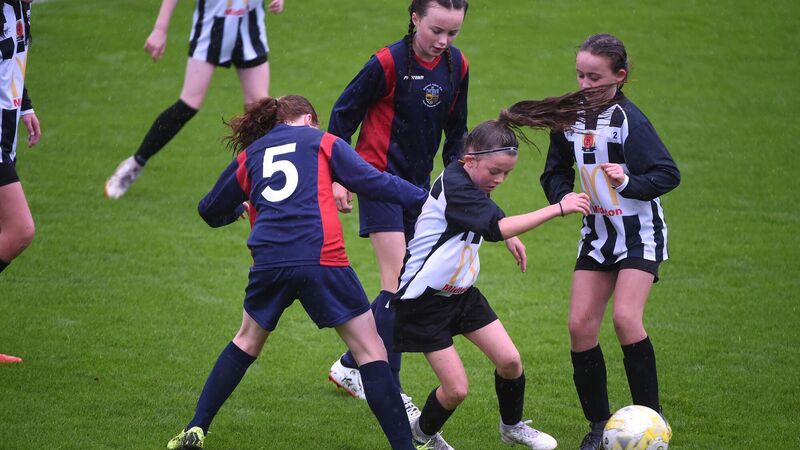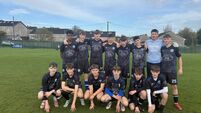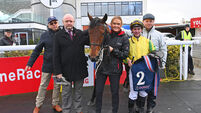Sue Ronan: Cork players crucial as Irish women's soccer explodes in popularity

THERE are few more positive, passionate, or knowledgeable people when it comes to Irish football than Sue Ronan.
A former Women’s League of Ireland and international player plus FAI Women’s Player of the Year, Ronan came to national prominence whilst in charge of the Republic of Ireland senior women’s team for a six-year spell between 2010 and 2016.
Having also coached the national U16 and U19 squads, few individuals were better placed to step into the demanding role of Head of Women’s football. Yet, Sue Ronan embraced the challenge and took over at a time of unprecedented grassroots interest and increased media coverage at international level.
Ronan (and women’s football in general) still faces an almost daily challenge of gaining proper respect for their chosen sport. Yet, in a historically male-dominated area, a steady increase in the number of female players, coaches and administrators give Ronan hope for the FAI Women’s future.

“Before lockdown, Irish women’s football was going in the right direction and hopefully we can get back to that as quickly as possible,” Ronan commented to the Echo.
“Football is growing and on the up in this country. In terms of growth, we have doubled the number of female players over the last couple of years. There are between 21,000 and 22,000 registered female players involved right now.
“There were less than 10,000 (official) players when the FAI launched a National Strategic Plan back in 2005 so that just shows how popular football has become for both young and adult female players. The numbers of active participants continue to grow and that is hugely encouraging for the future.”
There are many reasons for those heartening statistics. Sue Ronan correctly points to a reinvigorated grassroots setup as well as an increase in the number of FAI programmes available to females at youth and senior level.
“I would put a lot of that growth down to the grassroots programmes for girls that the FAI has introduced,” Ronan said.
“There were specific programmes introduced between 2009 and 2010 including the phenomenally successful ‘Soccer Sisters’ which resulted in huge numbers getting involved with football, most trying the sport out for the first time."
Being comfortable playing football with their friends or their peer groups, in a fun and friendly environment, allowed young girls to just enjoy themselves. It was no longer a case of one or two girls on their own at a summer camp with 60 or 70 boys and sometimes struggling to even get a kick of the ball.
Introducing female-only programmes changed all that and led to an explosion of younger age-groups signing up and getting involved.
“Now we are seeing the benefits of that approach with the quality of players emerging at club and international level. Another positive from that timeframe was the fact our Women’s National League started to expand.”
Yet, there is still plenty of work to be done despite those encouraging statistics. Sue Ronan knows that she will have her hands full in the coming years to meet the growing demands at national level as well as ensuring Ireland’s fortunes improve in UEFA and FIFA qualifiers.
“Of the 22,000 registered players we currently have, probably 17,000 of those are aged U18 or under which means our adult representation is much smaller compared to the underage in the Republic of Ireland right now,” Ronan explained.
“In all, there are about 25 active leagues throughout the country. When you think about that, to have so many, it is quite a number of girls ‘diluted’ across so many leagues.
"That, unfortunately, dilutes the quality of games and teams. It also leads to the challenge of offering enough competitive games to keep players engaged.
“Having said that, those numbers underline why the FAI believe the game is headed in the right direction. We are growing our number of active players on an annual basis and there are new grassroots programmes to help teach girls all the basics when starting out.

“We have also brought in ‘Elite Programmes’ to cater for our most talented players over the past couple of years. Initially, those programmes would have started off as winter training camps before evolving into Emerging Talent Programmes (replicated in the schoolboys pathway).
"Now we have schoolgirls leagues with their own academies and a pathway for the best young female footballers to progress on to FAI regional level, training and playing at various centres of excellence in nine venues around the country.
“At the top of that ‘tree’, for our talented players, we have our Women’s National League. That (league) began back in 2011 and thankfully, has led to a new National U19 league also being introduced.
"The FAI would be hopeful to add to that existing pathway in the coming years. All in all, I would have to say that the current state of play when it comes to women’s football in Ireland is particularly good.”
“The likes of Denise O’Sullivan, Clare Shine, Megan Connolly and Eabha O’Mahony who are currently playing underlines that point. There were also Cork players back from when I was playing myself, like Liz Towler, Caroline Nagle and Sinead Forde, all fantastic footballers.”











 App?
App?







